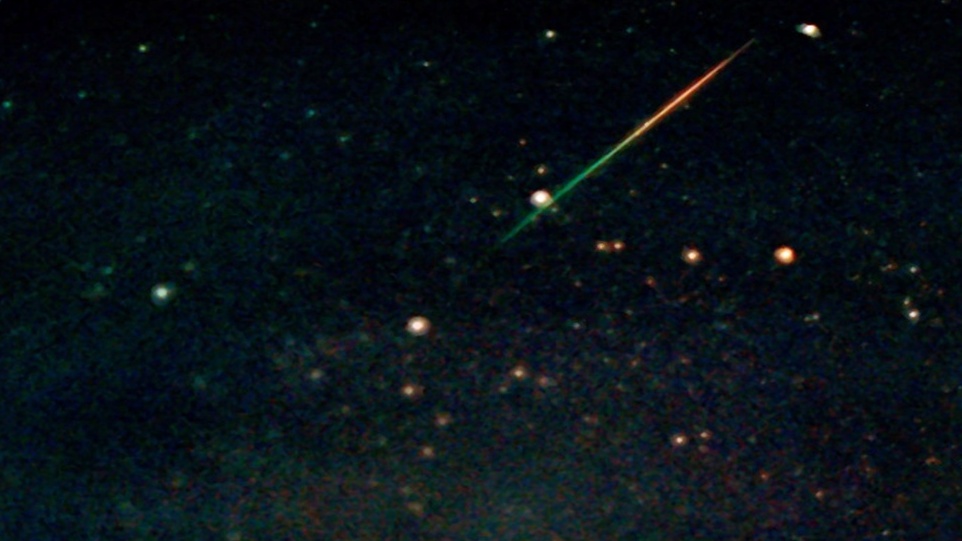The annual Perseid Meteor shower is one of the two best each year, and this year conditions are favourable, with no bright moonlight to spoil the show.
Meteors, often called Shooting Stars or Falling Stars, are just tiny bits of debris in space which plough into our atmosphere at very high speed and ‘burn away’ in a streak of light lasting just a second or so.
Most of the annual meteor showers are caused by streams of tiny particles emitted from comets as they orbit around the Sun, and the Perseids originate from Comet Swift-Tuttle, named after the two astronomers who discovered it. The Earth passes through this shower of tiny particles each August, with the maximum occurring on the night of August 11-12th, and especially 12-13th, when up to 80 meteors per hour can be observed under ideal conditions in the early hours of the 13th. However, some Perseids can be seen from the beginning of the month up to about the 20th, although the rates are much lower the further away from the date of maximum.
They are called Perseids because they all seem to come from a point in the sky in the constellation of Perseus. They can appear anywhere in the sky, at random, but if you trace the direction of their tracks backwards, they will all appear to come from a small area in Perseus, which lies along the Milky Way.
Perseus will be rising in the North East when the sky gets dark, and the number of meteors seen will increase from then as Perseus gets higher up in the East and then almost overhead, until dawn twilight gets too bright.
The young crescent Moon will set as twilight ends, so moonlight will not interfere this year.
You don’t need a telescope, or even binoculars, to see them, just your own eyes. But you must allow time for your eyes to adapt to the darkness before you’ll start to see any: if going out from a bright room, this takes 10 minutes for a reasonable view, but around 20 minutes to get the best view. For comfort, use a reclining chair or lounger, and wrap up well as it will get quite cool after a while.
And you should try to observe from the darkest location possible, away from light pollution, i.e. the effects of bright city lights, or even nearby street lights or security lights. If you can see the Milky Way, you’ve got a reasonably good location. The new OM/Davagh Dark Sky Park in the Sperrins is being developed for observing events such as this.
Although they appear to come from Perseus, they can appear anywhere in the sky, and the best place to look is about 50 degrees above the horizon (a bit more than halfway up to the overhead point, and about the same distance to left or right of the radiant, in whichever direction you can get the clearest and darkest view. Obviously if it’s cloudy, you won’t see any, but if you look on the few nights on either side of the 12th/13th, you should still see quite a good display if it’s clear then.
Perseid meteors are fast, as they collide with Earth at a speed of almost 60 km per second. There are a good proportion of bright ones, although as with all showers, there are many more faint ones than bright ones. That’s why you’ll see more from a very dark site, and when your eyes have fully dark-adapted.
METEOR PHOTOGRAPHY: If you have a digital SLR which can give longish time exposures, and you can manually focus it on infinity, and adjust it to a high ISO (film speed equivalent), you can image the meteors with a bit of luck. Use the widest-angle lens you have. It will help to have a tripod. Point the camera about 50° up in the sky, about 40° from the radiant, for best results. Consult your camera handbook, or experiment with exposures until the sky fogging becomes too severe. Start with exposures of about 10 minutes, and see if the background is still dark; if not, reduce the exposure times a bit. But usually the bright meteors pass just outside the field of view of the camera!
NOTES TO EDITORS:1. The Irish Astronomical Association is a registered charity dedicated to promoting interest in, and information about, astronomy and space and related topics. It is the oldest and largest astronomical society based in N. Ireland, and the largest amateur astronomy society in Ireland .2. The meteors we see burn up at heights of about 100 km down to 80 km. We don’t see the actual meteor itself – just the streak of ionised light which is created as the particle burns away.
Terry Moseley

